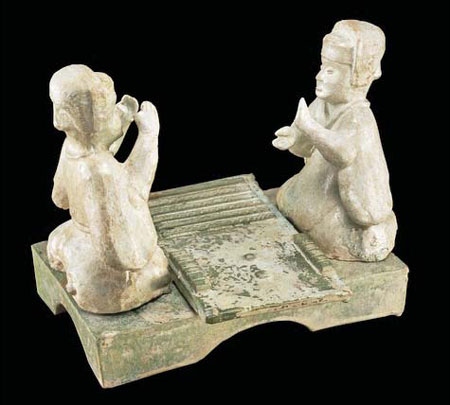Connected in death

 |
| Liubo was a game thought to be popular among immortals and mortals. Provided to China Daily |
The ancient Chinese believed that the netherworld was similar to the world of the living. To maintain one's status after death, a tomb also had to offer the items used by its occupant while alive.
In the early part of the Western Han dynasty (206 BC-around 100 BC), tombs contained models of soldiers, as they had in the time of the first Qin emperor (221-206 BC). Slightly later, the burial goods would include ceramic models showing life among the nobility and the rich. In the Eastern Han dynasty (AD 25-220), the tombs of ordinary people, including farmers, musicians and dancers, contained models representing their daily lives.
The figures in the item pictured are gambling. They are playing Liubo, a game thought to be popular both mortals and immortals alike. The board is marked with divination symbols, and the game pieces included the animals of the four directions: the White Tiger (West), the Green Dragon (East), the Vermilion Bird (South) and the Tortoise, with a snake coiled around its body, known as the Dark Warrior (North).
The models are made of earthenware, covered with a green lead glaze. Lead glazes were used only for burial goods, because they are poisonous.
Date: Ongoing
Venue: The British Museum, London
Website: http://www.britishmuseum.org
Today's Top News
- Xi calls for promoting volunteer spirit to serve national rejuvenation
- Xi chairs CPC meeting to review report on central discipline inspection
- Reunification will only make Taiwan better
- Outline of Xi's thought on strengthening military published
- Targeted action plan to unleash consumption momentum
- Separatist plans of Lai slammed






























